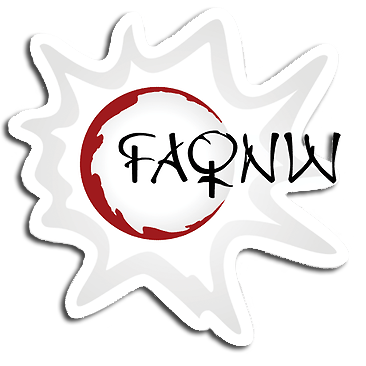The women we met mentioned several issues that they were facing in the context of governance. These include their full participation in the governance of their community, access to adequate health and social services that are adapted to Indigenous realities for them and their families, and finally, a safe environment in which they can live and develop.
The objective of this section is to formulate arguments around these issues and then to reinforce them with statistics so that they can be used and presented to decision makers in the context of advocacy initiatives.
Women have the right to participate fully in the governance of their communities
"I will do it. I will dive in and bring back the coveted land [...]. The voice was that of Lady Toad. Immediately, the crowd murmured and laughed. How could a creature so small, so ugly and so old hope to succeed where the best divers had failed? But Great Turtle respected the will and courage of Lady Toad. He ignored the disparaging comments of the Animals and allowed the frail creature to dive [...]. A moment later, her figure emerged from the depths. To everyone's surprise, the frail creature slid its head out of the water and with its last breath, spat out the little bit of mud on Great Turtle's back.”
Like Lady Toad in this story, women have always participated in the governance of their communities. It is therefore important to ensure that all governance frameworks for Indigenous communities, whether through the Indian Act or through new structures, guarantee and protect women's roles in governance from their inception. Women and their rights must be considered from the beginning, as it will be much more difficult to include them later.
For example, one woman leader explained how women already have critical roles in the governance of their community, but that these roles are often not recognized:
"If you know the history of your people, you know that, depending on where you come from, you have the matrilineal lines that have been suppressed. I will say that in my nation where I come from, women are strong. But because of the Indian Act, the way they set up their system, I feel like a lot of the power goes to the men, because we have a lot of men who are community leaders and all the other men who are councillors. But what's interesting is that when you look around the Band Council office or the health centres, it's all women who are working. But they are not in leadership positions most of the time."
Some statistics
Here is a tool that allows organizations to reflect on the role and place of women within their structure.
Women and their families must have access to adequate health and social services adapted to Indigenous realities
"Soon after, Yäa'taenhtsihk saw her daughter's body change. She was pregnant. Very early in her pregnancy, the young woman guessed that she was carrying Twins (...). The woman gave birth to the eldest in a natural way. The youngest son made his way under his mother's armpit and killed her instantly. Yäa'taenhtsihk ran to her daughter and found her lying on the ground, lifeless. Filled with sadness and anger, she asked the children which of them was responsible for her daughter's death.”
For women to participate in the governance of their communities, they must have the time and energy to get involved. However, Indigenous communities face significant social and economic challenges caused by colonial policies designed to accelerate their assimilation into the rest of Canada. When funding for social programs is cut, the responsibility for these services falls to the voluntary sector and families, which are usually the responsibility of women.
One woman leader described how in her community, women often had a lot on their shoulders:
"I find that there's still a tremendous amount of work to be done... But women are often the family breadwinners, it's something that's very unique here, even a situation that's really unique, it's often... it relies a lot on women. The family, the continuity, the children, taking care of the elderly all that, the health."
Some statistics
Women must be able to enjoy safe and violence-free environments
"The two stars were not created to remain together. They were to share the task of illuminating the world. One day, the Moon entered the underground passage before the Sun reached it. This made the Sun furious. The Sun’s anger was such that it violently attacked the Moon and almost killed it. The Moon was saved by the vigilance of Little Turtle who, noticing Moon’s absence, hurried through the underground maze in search of Moon. She found the Moon, seriously weakened, wandering sadly under the ground. All that remained of Moonwas a fragment of her warmth and light."
Issues of violence against Indigenous women must be understood within the historical context of colonization. This violence is rooted in the targeting of Indigenous women and families throughout Canadian history, including the Indian Act, the forced sterilization of Indigenous women, and the numerous placements of Indigenous children in state care.
One woman leader explained how violence against Indigenous women and girls is closely linked to colonization:
"Well, if you're talking about the missing and murdered women and girls, that's a sad story. So, to me, when you talk about that, it's another effect of Residential Schools, a government policy to kill Indians and to make Indians as white as possible. I think that's the effect of all of that, that happened in the past.”
Some statistics
YOUR TURN
Take a moment to look at the statistics again:
Behind all of the statistics that have been presented to you, there are lives and stories to be honoured. Take time to reflect on your community:

